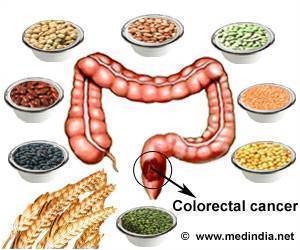Highlights
- A whole grain has the bran, the germ, and the endosperm in same proportions as of the grain while growing in the fields.
- The effects of a whole-grain diet on resting metabolic rate were sensitive to dietary adherence.
- A combination of increased resting metabolic rate and greater fecal losses help to lose extra 100 calories per day.
In this new study, food was provided to participants for eight weeks which helps in explaining how whole grain consumption is beneficial in weight management. The study was done to examine levels of hunger, satiety and the effect of whole grains on resting metabolic rate and fecal energy losses and to compare it with refined grains.
"Many previous studies have suggested benefits of whole grains and dietary fiber on chronic disease risk. This study helps to quantify how whole grains and fiber work to benefit weight management and lend credibility to previously reported associations between increased whole grains and fiber consumption, lower body weight and better health," says Phil J. Karl, PhD, first author of the study,nutrition scientist at the U.S. Army Research Institute of Environmental Medicine in Natick, MA.
Whole grain vs. Refined grains
A whole grain has the bran, the germ, and the endosperm. The outer nutritious layer has the same proportions as when the grain was growing in the fields. Whole-wheat, oatmeal, brown rice, barley, rice, sorghum, quinoa, rye, buckwheat, millets, amaranth are some of the widely used whole grains. They are high in carbohydrates & protein, low in fats and provide varying amounts of fiber, B vitamins and minerals like magnesium, selenium and copper.
Refined grains on the other hand, are starches that have been processed and are broken down into fine textured particles. Whole grains undergo milling and the nutrient-rich bran and germ are removed while processing. The starch of dietary fiber, iron and many forms of B vitamin are drained. Though other nutrients like iron, folate can be enriched, fiber is generally not.
Eighty-one men and women between the ages of 40 and 65 were randomized to either the whole grain diet group or the refined grain diet group. The study was conducted for 8 weeks.
Individual calorie needs of the participants were determined. For the first two weeks of the study, all the participants ate the same type of food. After which the participants were randomly assigned to either whole grains or refined grains diet group.
Participants were asked to consume all the food that was provided, to return the food they had not eaten and their physical activity pattern remained unchanged. Researchers measured body weight, metabolic rate, blood glucose, fecal calories, hunger and fullness throughout 8 weeks.
What was the effect?
People who ate a diet with whole grains, nearly matched the daily recommended dietary allowance(RDA) for fiber. Compared to people who ate refined grains without much fiber, they lost an extra 100 calories per day due to the combination of increased resting metabolic rate and greater fecal losses.
"We provided all food to ensure that the composition of the diets differed only in grain source. The extra calories lost by those who ate whole grains was equivalent of a brisk 30 min walk - or enjoying an extra small cookie every day in terms of its impact," said senior author Susan B. Roberts, Ph.D., senior scientist and director of the Energy Metabolism Laboratory at USDA HNRCA.
Study Findings
- At the end of 8 weeks, those who ate whole grains had an increase in resting metabolic rate and fecal energy losses compared to those who ate refined grains.
- The extra fecal energy losses were due to the effect of fiber in the digestion of other foods and not due to the extra fiber itself.
- The effects of a whole-grain diet on resting metabolic rate was sensitive to dietary adherence. Resting metabolic rate is the speed at which the organs function at rest.
- Commercially available whole grain flour products were used in the study. These foods with the kernels of whole grain might elicit more pronounced benefit.
- Hunger, fullness and diet satisfaction were not statistically different between the diets.
The recommended dietary allowance of whole grains for women is a minimum of three ounces and four ounces for men. This is equivalent to consuming 1½ to 2 cups of brown rice or oatmeal each day.
Owing to the numerous health benefits of dietary fiber,USDA recommends Americans to replace refined grains with whole grains.
Reference
- What's a Whole Grain? A Refined Grain? - (http://wholegrainscouncil.org/whole-grains-101/whats-whole-grain-refined-grain)
Source-Medindia















